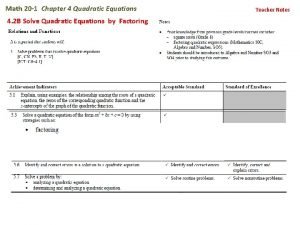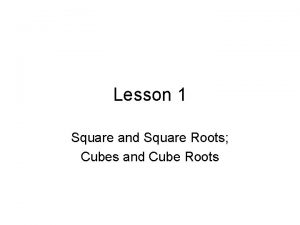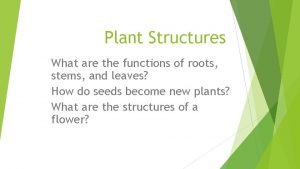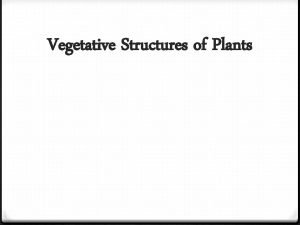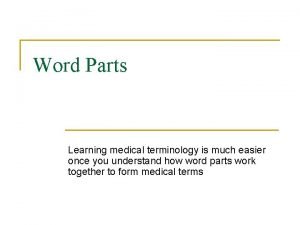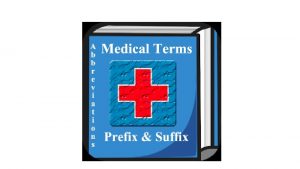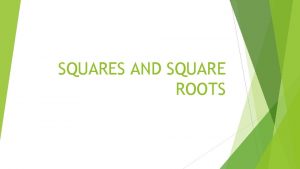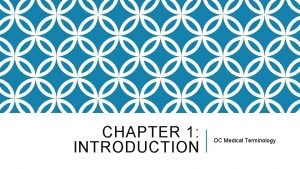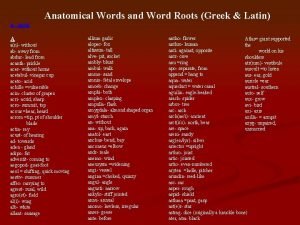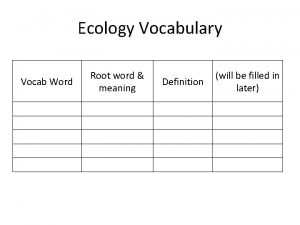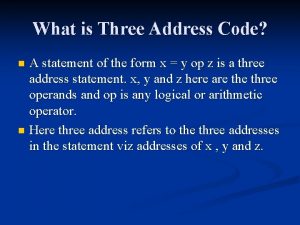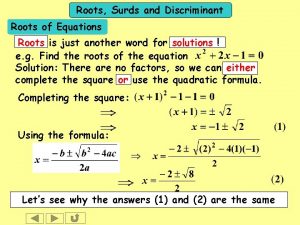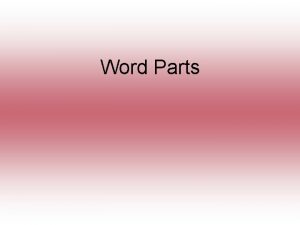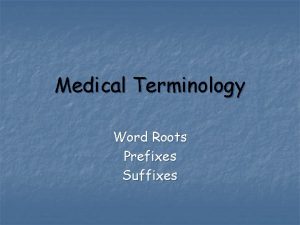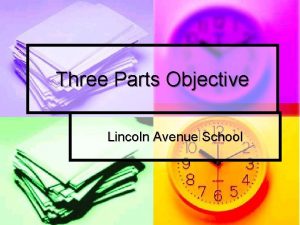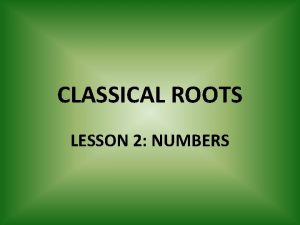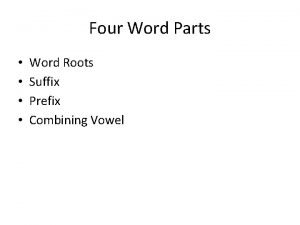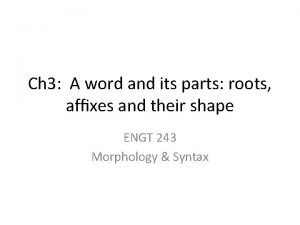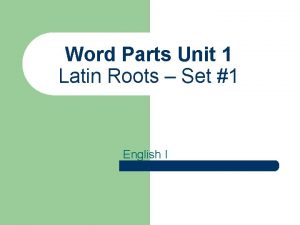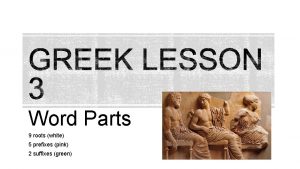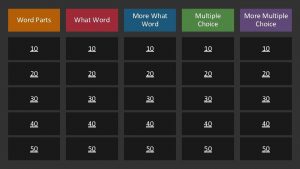3 WORD PARTS Three word parts Word roots



























- Slides: 27


3 WORD PARTS

Three word parts • Word roots contain the basic meaning of the term. They usually, but not always indicate the involved body part. • Examples: Underline the word root. (look for the body part)

Three word parts • Suffixes usually, but not always, indicate the procedure, condition, disorder or disease. A suffix always come at the end of the word • Examples: Square the suffix

Three word parts • Prefixes usually, but not always, indicate location, time, number, or status. A prefix always come at the beginning of a word. • Example: Circle the prefix (if there is one!)

Rules for using Combining Vowels • 1. A combing vowel is used when the suffix begins with a consonant. • Example: neur/o (nerve) is joined with the suffix –plasty (surgical repair) the combining vowel O is used because – plasty begins with a consonant. Neur/o/plasty

Rules for using Combining Vowels • 2. A combining vowel is not used when the suffix begins with a vowel (a, e, i, o, u). • Example: when neur/o (nerve) is joined with the suffix – itis (inflammation), the combinng vowel is not used because –itis begin with a vowel. Neuritis

Rules for using Combining Vowels • 3. A combining vowel is always used when two or more root words are joined. • Example: when gastr/o (stomach) is joined with enter/o (small intestine), the combining vowel is used with gastr/o. However, when the suffix –itis (inflammation) is added, the combining vowel is not used with enter/o because –itis begins with a vowel. Gastroenteritis

Rules for using Combining Vowels • 4. A prefix does not require a combining vowel. Do not place a combining vowel between a prefix and the word root.

practice • Circle the prefix, underline the word root, square the suffix, indicate combining vowel with / /

Using your Packet, define the WR/Pre/Suff • Using Appendix A Define WR/Pre/Suff on Page 2

• Row Review Prefixes and suffix charts

Review: • Word roots contain the basic meaning of the term. They usually, but not always indicate the involved body part. • Suffixes usually, but not always, indicate the procedure, condition, disorder or disease. A suffix always come at the end of the word • Prefixes usually, but not always, indicate location, time, number, or status. A prefix always come at the beginning of a word. • Review ALL charts from packets

Taking Terms Apart • To determine a word’s meaning by looking at the component pieces, you must first separate it into word parts. • 1. Always start at the end of the word, with the suffix, and work toward the beginning. • 2. As you separate the word parts, identify the meaning of each. Identifying the meaning of each part should give you a definition of the term. • 3. Because some word parts have more than one meaning, it also is necessary to determine the context in which the term is being used.

Practice • Break this term down: otorhinolaryngology

Practice • Break down and define the Unit vocab terms in your packet • ALWAYS start with the suffix!

Word Suffix Otorhinolaryngology Abdominocentesis -centesis Abnormal -al Addiction Prefix (if one) Word part/s Definition Ot/o, rhin/o, laryng/o Study of ears, nose, throat Abdomin/o- Surgical puncture to remove fluid from abdomen Norm/o- p. t. away from normal -ion Addict/o- Condition of being controlled by Adenosclerosis -sclerosis Aden/o- Abn. Hardening of glands Appendectomy -ectomy Append/o- Surgical removal of appendix Arteriomalacia -malacia Arteri/o- Abn. Softening of arteries Arteriosclerosis -sclerosis Arteri/o- Abn. Hardening of arteries Arteriostenosis -stenosis Arteri/o- Abn. Narrowing of arteries ab-

Word Suffix Prefix (if one) Word part/s Definition dysfunctional -al Dys- Function/o p. t bad function Dysuria -ia Dys- Ur/o P. t. difficult urination etiology -ology Eti/o- Study of cause Gastritis -itis Gastr/o- Inf. of the stomach Gastrosis -osis Gastr/o- Abn. Cond. Of the stomach Hemorrhage -rrhage Hem/o- Excessive discharge of blood Hypertension -ion Hyper- Tens/o- Cond. Of increased tension intravenous -ous Intra- Ven/o- p. t. within the vein

Word Suffix lithotomy Prefix (if one) Word part/s Definition -otomy Lith/o- Surgical incision of stone Neuroplasty -plasty Neur/o- Surgical repair of nerve Pathology -ology Path/o- Study of disease Prenatal -al Nat/i- p. t. before birth Rhinoplasty -plasty Rhin/o- Surgical repair of the nose Subcostal -al Cost/o- p. t. under the rib Tonsillectomy -ectomy Tonsill/o- Surgical removal of tonsils Tonsillitis -itis Tonsill/o- Inf. of tonsills Pre- Sub-

Flip card review: • Using your Practice chart you just corrected pick 4 words: • Any words, yes there will be duplicates • Please make sure you are defining them correctly • Bring up to the front when you are finished

Pass left Review: • Each student gets a flip card randomly. • Study it! Memorize it! (correct if needed) • Pass to the person on your left when teacher says (about every 7 -10 seconds) • Please do not pass before then, just hold on to your card • Beginning students should have a pile of cards on their desks to pull from • End students just make a pile of cards to be collected when finished

Medical abbreviations • Using packets fill in the medical abbreviations

Intravenous in the morning after eating and blood work Nothing by mouth until electrocardiogram, diet as tolerated in the morning Take vital signs every 4 hours, aspirin as desired Examination of both ears as needed every day pt ASA PRN am til exam Move pt qid to chair Check P and BP qh, DC BR ad lib You might need packets

@ A&P a. c. AD ADL ad lib alt dieb At Anterior and Posterior Before meals Right ear Activities of daily living As desired Alternate days (every other day) am Morning amb Ambulate, walk ant Anterior AS Left year ASA Aspirin asap (ASAP As soon as possible as tol As tolerated AU Both ears bl Blood bl wk Blood work BR Bed rest BRP Bathroom privileges c c/o CC cl liq CXR DC DAT DNR exam FF hr (h) Hx IM LOC neg NPO P palp pc po With Complain of Chief complaint Clear liquid Chest x-ray discontinue Diet as tolerated Do not resuscitate Examination Force fluids Hour History Intramuscular Level of consciousness Negative Nothing by mouth Pulse Palpation After meals By mouth post pp pt q q 2 h qd qh qid tem p (T) tid tol V/S y/o Posterior After eating Patient Every two hours Every day Every hour Four times a day Temperature Three times a day Tolerated Vital signs Year(s) old

Review time 1. 5 min Silent study ALL word parts, definition, abbreviations 1. On the test you will need to know individual definitions for word parts, definitions of whole words, abbreviations, and able to transcribe sentences (make a whole sentence into short hand vice versa) 2. 3 min Buddy Study

Pass left review • Adding to the flip cards: • Each student get a notecard • Cut in half • Choose ANY 2 words out of the charts from packet (could be prefix, suffix, abbreviations…) • Place up front in bucket. • Review: add the flip cards. Each student starts with a card, teacher says pass…

Quizlet review in library • Click on the quizlet link from my teacher website • Click med terms • Click on link
 Vanessa jason biology roots www.biology-roots.com
Vanessa jason biology roots www.biology-roots.com Is 125 a perfect square
Is 125 a perfect square Existence and uniqueness of square roots and cube roots
Existence and uniqueness of square roots and cube roots Economic roots of american imperialism
Economic roots of american imperialism Sum of the roots and product of the roots formula
Sum of the roots and product of the roots formula Perfect cube list
Perfect cube list Name three main functions of roots
Name three main functions of roots Main part of seed
Main part of seed Parts of flowering plants and their functions
Parts of flowering plants and their functions -in medical term suffix
-in medical term suffix Intravenous combining vowel
Intravenous combining vowel Word roots metric prefixes
Word roots metric prefixes Veterinary suffixes
Veterinary suffixes 2352 prime factorization
2352 prime factorization Prefix chondr
Prefix chondr Root word deci
Root word deci Decomposer root word
Decomposer root word Building vocabulary: word roots - ecology
Building vocabulary: word roots - ecology Hobbits and orcs problem psychology
Hobbits and orcs problem psychology Othello act three scene three
Othello act three scene three In three minutes write three things
In three minutes write three things Signs have three purposes, identify the three.
Signs have three purposes, identify the three. The three colonial sections-one society or three
The three colonial sections-one society or three 3 address code
3 address code What are three parts of the cell theory
What are three parts of the cell theory Great britain consists of three parts
Great britain consists of three parts Evaluation in nursing process
Evaluation in nursing process As evidenced by nursing examples
As evidenced by nursing examples




